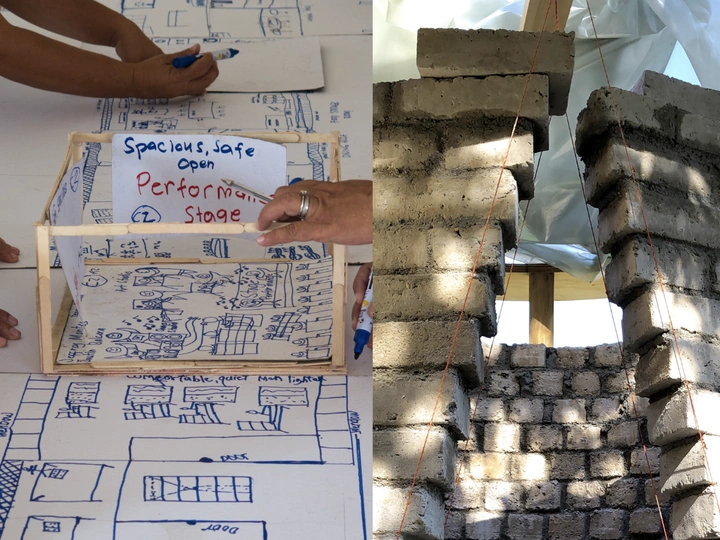Architectures of the 1.5°C

Sudarshan Khadka
Era Savvides
Nasios Varnavas
Urban Radicals designs objects, rooms, architectures and landscapes. We started out in 2019 as a duo between architects and designers. Era Savvides and Nasios Varnavas and is now a network of friends, colleagues and expert collaborators, working together to solve design problems across contexts and scales. We grow through projects, parties, dinners, fishing trips, gardening, stories, painting, cooking, workshops, walks, gatherings and conversations.
Khadka + Eriksson Furunes is a collaborative architecture studio run by Sudarshan V. Khadka Jr. and Alexander Eriksson Furunes. The practice is rooted in principles of collaboration and mutual support, with design and build projects in Brazil, China, India, Norway, Philippines and Vietnam. This work is also a research into practices of mutual support around the world, and how such cultural understandings of collaboration can inform architecture.
In 2022, the UN Environmental Programme (UNEP) made clear that the world is set to breach the 1.5°C global warming threshold by 2027. While emphasising that the time to make incremental changes has now passed, UNEP warned that at this point, “only a root-and-branch transformation of our economies and societies can save us from accelerating climate disaster.”
It comes as no surprise that the majority of discussions around sustainability today are filtered through emergency “blanket” protocols aimed at swiftly implementing top-down, technocratic frameworks and regulations. These are paramount, especially in large metropolitan contexts and at a time when globalisation and efficiency prevail in order to respond to rapid population growth, mass migrations and the climate emergency.
On the other hand, questions that cannot help but arise when projecting into the future of our environments are – how could an architecture of 1.5°C respond towards local contexts and, indeed, what would locality even mean by 2050?
Challenging individualistic modes of practice, the project explores collaborative practices and material systems in architecture in order to promote a nuanced and critical understanding of social and material sustainability. It explores how the making of space can emerge from a place of horizontally, collaboration and benefit people and place, rather than capital.
Our focus will be on how we work together with different forms of knowledge to explore architectures that emerge outside of globalised understandings of institutionally implemented sustainability; rooted in locality, material ecology, people and mutual support.
The project will re-frame themes and work we’ve been mutually exploring into physical manifestations of our creative dialogue for and during our LINA fellowship. Through collaboration with LINA members we will generate counter proposals to contemporary large socioeconomic models, which we aim to document, open up to the public.